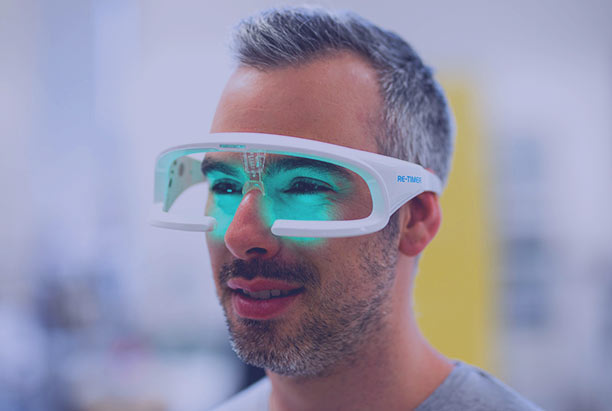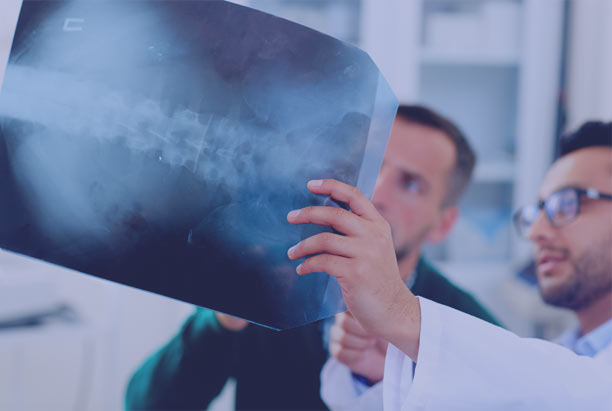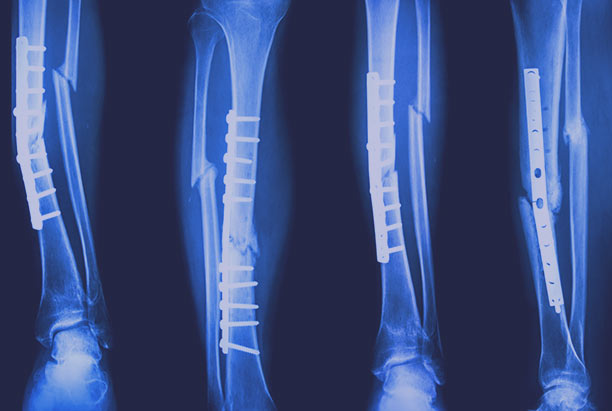Projects
We’ve considered well over 1,000 ideas for new medical devices since our establishment. We’ve completed over 210 collaborative workshops and 120 R&D projects.
Our clients come from a range of professions: surgeons wanting to improve the lives of patients; researchers needing assistance to get their research out of the labs and into the hands of end-users; industry from startups to established businesses who are diversifying their product line; and the everyday inventor who sees a problem and has an idea to solve it.
Projects have included special glasses that help frequent flyers and shift workers adjust their sleep cycle, a cancer-detecting probe that is improving surgical outcomes and a device to assist orthopedic surgeons when fixing bone fractures.
Since 1987, world-renowned sleep psychologists, Professor Leon Lack and Dr Helen Wright from Flinders University, have studied the effects of light on the human body clock.
Their work focused on circadian rhythms, the fluctuations in biological process occurring on a 24-hour basis in the body. Research determined that exposure to bright light can normalize the timing of the rhythms and assist with the treatment of insomnia, winter depression, jet-lag and shift work disorder.
The result of this extensive body of work was Re-Timer, glasses proven to re-time one’s body clock. The glasses shine glowing green-blue light into the eye of the wearer to help manipulate their production of melatonin — the hormone the body uses to induce sleep.
When Adelaide-based orthopaedics company, Austofix, wanted to fast track their invention to market, they partnered with the Medical Device Partnering Program to make it a reality.
The Ezy-Aim Electronic Distal Targeting System, was developed to provide surgeons with ‘an extra pair of eyes’ when inserting nails and screws to repair broken bones.
The technology allows surgeons to accurately judge the location of the implant inside the bone, removing the need for multiple X-rays when fixing bone fractures.
MDPP supported University of Adelaide researchers to bring a new cancer-detecting probe to clinical trial.
The device – an optical fibre probe - identifies cancerous tissue in real time by measuring pH levels of tissue, assisting surgeons to precisely remove cancerous tissue while sparing the healthy tissue surrounding it.
Dr Erik Schartner and Professor Mark Hutchinson, who developed the concept, came to MDPP after conducting extensive lab based testing, “We were missing a prototype to demonstrate how the probe would function in an operating theatre. That is where the MDPP came in and we were very happy with their work.”
When Professor Matthew McDonald and Dr Peter Pedoulias had a revelation in the operating theatre about how spinal fusion surgery could be improved they turned to the Medical Device Partnering Program to make it a reality. Spinal fusion is a surgical procedure that corrects issues of the small bones of the spine by permanently connecting two or more vertebrae. This complex surgery is often the last resort to treat back problems and can cost around $46,700 per patient.
Helping patients and aged care residents to stand is all in a day’s work for many healthcare workers - but it comes at a cost, with nursing assistants suffering one of the highest rates of work-related musculoskeletal injuries.
A solution is now available thanks to a new medical device supported by the Medical Device Partnering Program, the ‘U-Stand Frame’. The lightweight and portable frame, an invention of Innovo Healthcare, is giving independence back to the patient, allowing them to control the timing, speed and mechanics of their sit-to- stand movement.
Page 2 of 2





